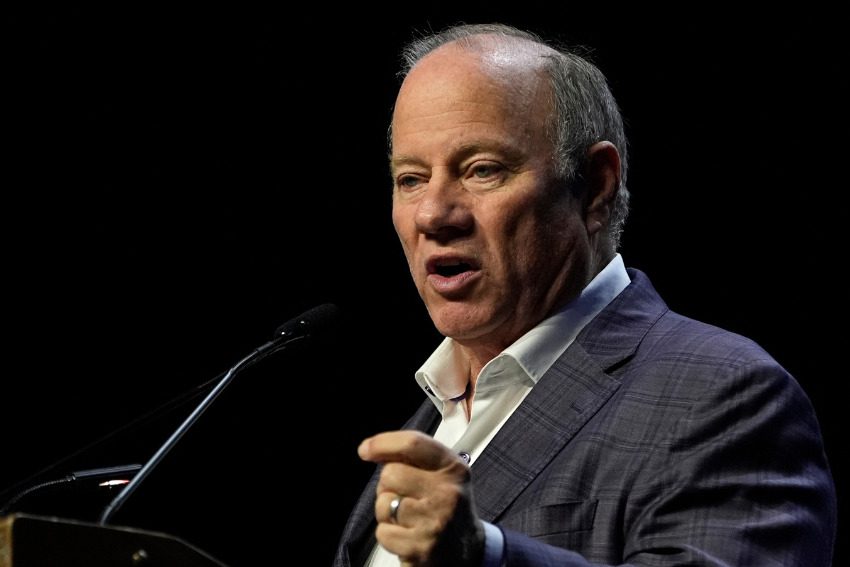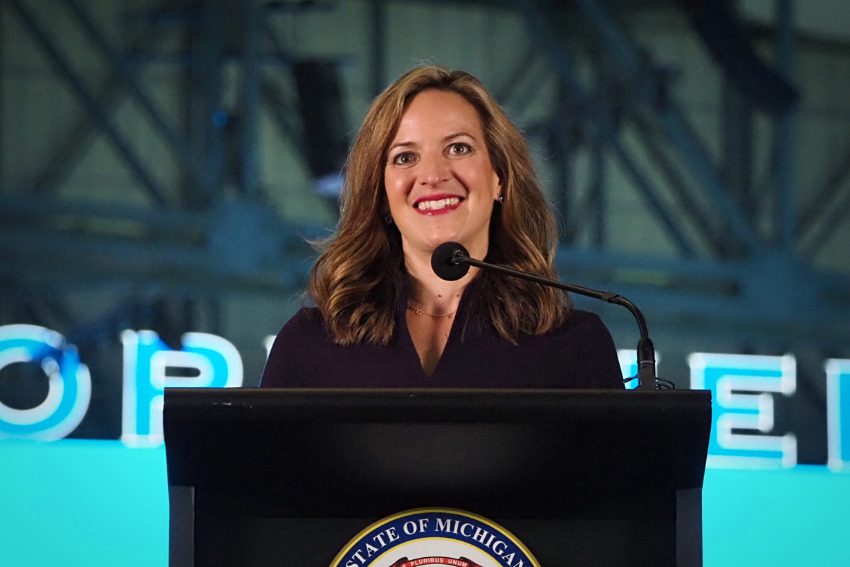
Voting might feel like a small act, but it’s a powerful one. Here’s a breakdown of what happens to your ballot once you cast it—and how it shapes Michigan’s choice for president.
MICHIGAN—Ever wonder what happens to your vote after the polls close on Election Day—or after you cast it during the Early Voting period, or send it back by mail?
Every Michiganders’ vote sets off a complex—and rather boring—chain reaction that’s crucial for ensuring the peaceful transfer of power from one president to another.
Here’s your step-by-step guide to understanding exactly how Michigan’s votes get counted, verified, and ultimately contribute to shaping America’s future:
1. Polls close at 8 p.m. on Election Day.
Any registered voter who is standing in line at their polling place by 8 p.m. on Election Day will be permitted to vote. Long lines could contribute to delayed reporting of results in some areas.
Law enforcement is standing by to ensure Michiganders are able to exercise their right to vote—particularly without having to face illegal misinformation or intimidation tactics at the polls.
It’s a felony to obstruct or attempt to obstruct an eligible voter from voting on Election Day.
Important Note: Polls will close at 9 p.m. Eastern Standard Time for Michigan voters who live in a small sliver of the Western Upper Peninsula, which, for them, is 8 p.m. Central Standard Time.
2. Election workers secure the machines and the ballot boxes.
Election workers are trained to follow strict operating procedures after the polls close to ensure ballots and all election tabulator equipment is processed in a safe and secure fashion—and law enforcement is always available to ensure they’re protected from any illegal interference.
Some of the nation’s largest cities have also taken precautionary security measures to protect workers—including by hiring armed security and installing shatterproof glass on the windows.
New state laws are also in effect for this year’s election, which created new penalties for those who are convicted of intimidating or obstructing election workers from performing their duties.
3. The ballots are counted and reported.
Voting machines begin counting votes shortly after the polls close. Those preliminary results—which may also include some absentee ballots—are then transmitted to county clerks across Michigan, who often publish them online or distribute them directly to the media.
Important Note: A recent change in state law enables all election officials to begin processing mail ballots beginning at least one day before Election Day—with an eight-day jumpstart allowed for jurisdictions with at least 5,000 people. That process includes verifying voters’ signatures, opening ballot envelopes, and scanning them through a tabulator—which reportedly helped speed up the counting process during this year’s primary election. Those ballots can be fed through machines and counted, but results cannot be released until 8 p.m. on Election Day.
That process includes counting ballot envelopes, confirming signatures, and verifying that each ballot number matches the total ballots returned on the voter roll, as well as other steps to weed out any potential inconsistencies and ensure that each ballot is appropriately counted.
Important Note: The ballot counting is always done under strict, bipartisan supervision—and state law restricts observers from interfering with the process. Security is also typically heightened around these ballot counting areas to prevent any possible disruptions.
4. The unofficial election results are announced.
Counties usually report unofficial results on Election Night. Those tallies usually include both in-person and absentee ballots—although a full tally of absentee results may take time, particularly in jurisdictions where election officials didn’t already begin processing those ballots.
Secretary of State Jocelyn Benson has cautioned that high voter turnout could contribute to the unofficial results being delayed until a full day after the election—which could create a window for disinformation campaigns and premature claims of victory to emerge before the early results.
Either way, Benson and local officials have emphasized that early results are always unofficial. The final count—and the official certification of the election results—naturally takes some time.
Important Note: Some news outlets don’t wait for unofficial state results to arrive before they project winners in key races. The Associated Press, which Courier Newsroom relies on to report race results on Election Night, does not make projections and will declare a winner only when it has determined there is no scenario that would allow the trailing candidates to close the gap.
5. County boards of canvassers review the election results.
Within a few days, all 83 county boards of canvassers across Michigan will work to verify individual precinct totals and confirm that all valid ballots were counted. This is a legal process that’s designed to address any issues or recounts that may be requested or deemed necessary.
In Michigan, these boards are legally required to certify the results within their county. But political pressure or intimidation on board members could still influence their decisions, as was seen in 2020, when some Michigan counties initially withheld certification of the results.
Important Note: If that happens, the Board of State Canvassers has the authority to step in and unilaterally certify county-level election results. State courts may also consider legal challenges to the process, including by ordering that county election results be certified in a timely manner.
6. The Board of State Canvassers certifies the results.
By law, the Board of State Canvassers is required to certify Michigan’s election results within 20 days of the election. This is a very public process, which allows for challenges and objections—but only if they come along with credible evidence of an issue with the results.
At this stage, baseless legal challenges could still threaten to delay certification or serve to intimidate board members who could deadlock on the final certification of the election results.
Important Note: As the state’s chief election official, Benson can intervene to ensure that certified results proceed to the next stage, should the canvassing board delay certification.
7. Michigan’s presidential electors also sign off on the results.
After the results are certified, a slate of 15 people who serve as Michigan’s presidential electors for the winning presidential candidate will meet on Dec. 16 inside the state Capitol, where they’ll be legally required to certify the election for the candidate who won the state’s popular vote.
Those final, certified election results are then sent on to Congress and the National Archives.
Important Note: As seen in 2020, so-called “fake electors” could, again, attempt to claim they represent Michigan and submit fraudulent documents to Congress challenging official results. That would be a crime—and fake electors can (and already have) faced criminal charges.
8. Congress reviews and certifies the electoral votes.
In January, Congress will meet to review and certify the final Electoral College results—which will mark the final step in deciding the 47th president of the United States.
At this stage, federal lawmakers can still object to a state’s electoral votes—but those objections must be upheld by both chambers of Congress to succeed. And even then, they’re governed by strict rules that require significant evidence before any sort of challenge is allowed to proceed.
Important Note: Attempts to object to or delay certification could slow the process—as seen when ex-President Donald Trump led a violent mob to the Capitol on January 6, 2021.
What about a recount?
That’s possible.
Recounts are automatic in statewide races in Michigan if the margin is 2,000 votes or fewer. Candidates—including those running for president—may also request (and pay for) a recount regardless of the margin. Michigan covers the cost if those recounts change the outcome.
READ MORE: Flip it over! Michigan Supreme Court race may be hiding on your ballot
For the latest Michigan news, follow The ‘Gander on Twitter.
Follow Political Correspondent Kyle Kaminski here.
Support Our Cause
Thank you for taking the time to read our work. Before you go, we hope you'll consider supporting our values-driven journalism, which has always strived to make clear what's really at stake for Michiganders and our future.
Since day one, our goal here at The 'Gander has always been to empower people across the state with fact-based news and information. We believe that when people are armed with knowledge about what's happening in their local, state, and federal governments—including who is working on their behalf and who is actively trying to block efforts aimed at improving the daily lives of Michigan families—they will be inspired to become civically engaged.


Detroit Mayor Mike Duggan says next year will be his last in office; mum on his plans afterward
DETROIT—Mike Duggan says the coming year will be his last as Detroit mayor, amid growing speculation he's among the Democrats likely to launch a...

Benson says Michigan had high voter turnout with over 5.5M ballots cast
BY ANNA LIZ NICHOLS, MICHIGAN ADVANCE MICHIGAN—More than 5.5 million Michiganders turned out in the election, Michigan Secretary of State Jocelyn...

Democrat Elissa Slotkin defeats Mike Rogers to represent Michigan in US Senate
Preliminary election results show that Democratic US Rep. Elissa Slotkin has defeated her Republican challenger for a six-year term representing...

Here’s what we know about how Michiganders voted in this year’s election
Republicans have dismantled Democratic control of the state Legislature—but appear to have lost other key races as Michigan’s presidential election...

Michiganders on the verge of setting another record for voter turnout
Early, in-person voting and mail-in absentee ballots are making it easier than ever for Michiganders to participate in this year’s election, said...





